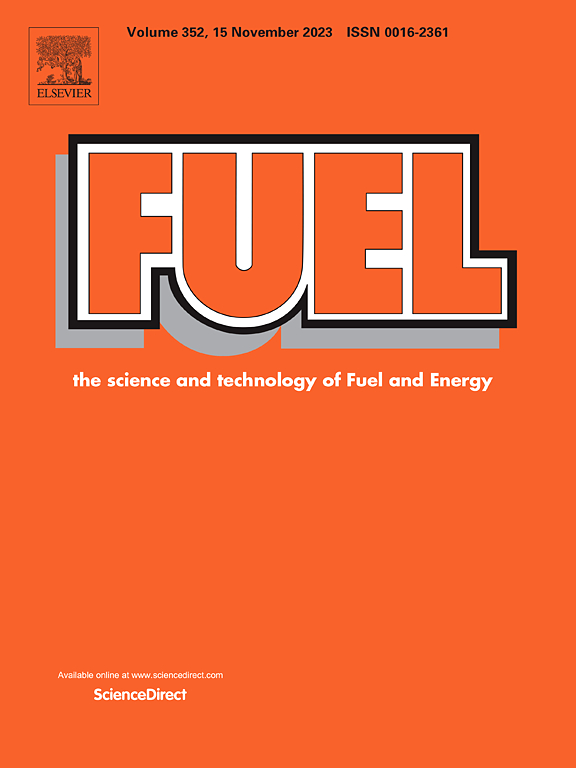Biocoke: Carrying capacity of coking coals for sugarcane bagasse char in terms of viscoelastic behaviour during co-carbonization
IF 6.7
1区 工程技术
Q2 ENERGY & FUELS
引用次数: 0
Abstract
Sugarcane bagasse was pyrolyzed to various temperatures and blended with three coking coals comprising two medium volatile bituminous (MVC 1 and MVC 2) and one high volatile bituminous (HVC 1) to assess carrying capacities and mechanisms behind fluidity loss during co-carbonization.
MVC 2 showed no fluidity loss when blended with 10 wt% char pyrolyzed to 600 °C and 800 °C. However, with higher char additions (20 and 25 wt%), fluidity loss progressively worsened due to reduced amount of coal-derived liquid filling voids, causing volatiles to exhaust the system more easily. Complete fluidity loss occurred at 30 wt% char addition. Conversely, for MVC 1, despite having similar properties to MVC 2 in terms of rank and volatile matter, a 10 wt% 800 °C char addition caused fluidity loss. MVC 2 swells to a greater extent than MVC 1 and it is hypothesized that char addition disrupts the bubble growth phase, promotes bubble coalescence, and exacerbates volatile release. Further, it is hypothesized that higher swelling coals, such as MVC 2, can better incorporate char, negating its effects on bubble growth and thereby retaining liquid.
For HVC 1, the addition of 5 wt% 800 °C char caused substantial fluidity loss which is attributed to the limited swelling behaviour of the coal alone, with bubble coalescence dominating over bubble growth early in the softening phase. The premature loss of volatiles caused by the addition of the char inhibits fluidity development and renders the blend unable to carry biochar. These results suggest that a coking blend’s carrying capacity for char may depend on its swelling behaviour, with greater swelling being advantageous.
求助全文
约1分钟内获得全文
求助全文
来源期刊

Fuel
工程技术-工程:化工
CiteScore
12.80
自引率
20.30%
发文量
3506
审稿时长
64 days
期刊介绍:
The exploration of energy sources remains a critical matter of study. For the past nine decades, fuel has consistently held the forefront in primary research efforts within the field of energy science. This area of investigation encompasses a wide range of subjects, with a particular emphasis on emerging concerns like environmental factors and pollution.
 求助内容:
求助内容: 应助结果提醒方式:
应助结果提醒方式:


